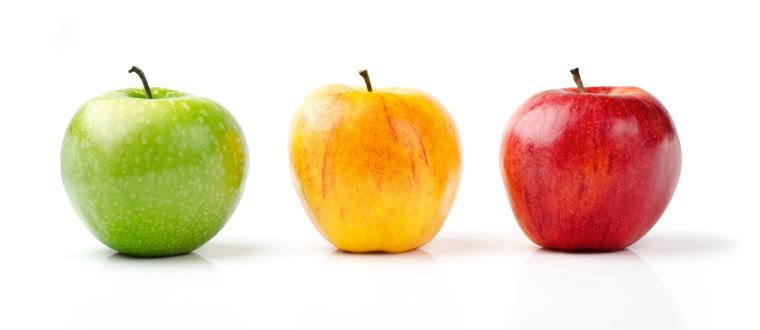I love public schools; and there is a lot to cheer about when it comes to the ability of public schools to prepare students for their futures. But there are three major areas in which public schools must improve if we want to see ourselves as providing a world-class education to our nation's children.
1) We must raise the achievement of poor children.
2) We must increase graduation rates.
3) We must provide continuous, high-quality professional development to our teachers.
It isn't that there aren't other areas that can and should improve in our public schools. But improvement in these three areas are absolutely critical if we truly want our school system to be exceptional and of the highest quality for all of our students.
----------------------------------------------------------------------------------------------------------------
We Must Do Better
Part 2 - Increasing Graduation Rates
Part 1 of this series was about the need to increase achievement among poor students. I am going to begin this part by looking at the differences in high school graduation rates between poor students and non-poor students. Take a look at this graphic from the organization America's Promise Alliance:
This graphic shows that (in 2012) low-income students had a graduation rate below 80 percent in 41 states while non-low income students had a graduation rate below 80 percent in only 7 states. As a nation, our graduation rate in 2012 was 81 percent. (source: National Center for Education Statistics - The Condition of Education)
Our national graduation rate has been rising since the 1995 - 1996 school year when it was 71%. We are moving in the right direction as a nation, but we still have a long way to go. Allowing 1 of every 5 students to leave school without a diploma has real and serious consequences. These include:
- Higher unemployment rates
- Lower pay compared to people with high school diplomas
- Greater need for public assistance
- Greater chance of incarceration
- Less effective parenting skills
Public schools clearly have many responsibilities. We must do everything we possibly can to get more students to graduate from high school--especially poor students. In decades past, completing high school was arguably less important than it is today. However, in today's world and in the world that our students will inherit, people without a high school diploma have a greatly enhanced risk of lifelong struggles to avoid poverty and to experience a middle-class lifestyle.
 As a graduate student, I questioned the difference between students who dropout of high school and students who graduate in the bottom 10% of their class. I hypothesized that such students who barely graduate were no better off than students who didn't graduate. Using data from the National Center for Education Statistics, I discovered that weak high school graduates were still better off than high school dropouts. That's right; even students who struggle to pass all of their courses in high school and eventually graduate are better off than people who never earn a high school diploma. Why? I think it is because there is something within these weak students that says, "This (schoolwork) is hard, and everyday I come to school I know that I am going to struggle. But I am going to continue to come and to work and to finish high school." I believe that students who (perhaps) hate school and always struggle academically AND still graduate have had a life experience that they carry with them in their futures struggles.
As a graduate student, I questioned the difference between students who dropout of high school and students who graduate in the bottom 10% of their class. I hypothesized that such students who barely graduate were no better off than students who didn't graduate. Using data from the National Center for Education Statistics, I discovered that weak high school graduates were still better off than high school dropouts. That's right; even students who struggle to pass all of their courses in high school and eventually graduate are better off than people who never earn a high school diploma. Why? I think it is because there is something within these weak students that says, "This (schoolwork) is hard, and everyday I come to school I know that I am going to struggle. But I am going to continue to come and to work and to finish high school." I believe that students who (perhaps) hate school and always struggle academically AND still graduate have had a life experience that they carry with them in their futures struggles.
This message of the importance of graduating from high school is logical and sensible to everyone working in education and probably to just about everyone outside of education. But despite our best efforts, this message is not getting through to 19% of our youth. And it is hitting particular groups of students worse than others. Once again, according to the National Center for Education Statistics (see top of page 13):
Group Graduation Rate (2012)
Amer. Indian/
Alaskan Native 68%
Hispanic 76%
Black 68%
Poor students well below the national average (see America's Promise)
These focus areas will help to improve graduation rates among our most vulnerable groups of students:
 As a graduate student, I questioned the difference between students who dropout of high school and students who graduate in the bottom 10% of their class. I hypothesized that such students who barely graduate were no better off than students who didn't graduate. Using data from the National Center for Education Statistics, I discovered that weak high school graduates were still better off than high school dropouts. That's right; even students who struggle to pass all of their courses in high school and eventually graduate are better off than people who never earn a high school diploma. Why? I think it is because there is something within these weak students that says, "This (schoolwork) is hard, and everyday I come to school I know that I am going to struggle. But I am going to continue to come and to work and to finish high school." I believe that students who (perhaps) hate school and always struggle academically AND still graduate have had a life experience that they carry with them in their futures struggles.
As a graduate student, I questioned the difference between students who dropout of high school and students who graduate in the bottom 10% of their class. I hypothesized that such students who barely graduate were no better off than students who didn't graduate. Using data from the National Center for Education Statistics, I discovered that weak high school graduates were still better off than high school dropouts. That's right; even students who struggle to pass all of their courses in high school and eventually graduate are better off than people who never earn a high school diploma. Why? I think it is because there is something within these weak students that says, "This (schoolwork) is hard, and everyday I come to school I know that I am going to struggle. But I am going to continue to come and to work and to finish high school." I believe that students who (perhaps) hate school and always struggle academically AND still graduate have had a life experience that they carry with them in their futures struggles.This message of the importance of graduating from high school is logical and sensible to everyone working in education and probably to just about everyone outside of education. But despite our best efforts, this message is not getting through to 19% of our youth. And it is hitting particular groups of students worse than others. Once again, according to the National Center for Education Statistics (see top of page 13):
Group Graduation Rate (2012)
Amer. Indian/
Alaskan Native 68%
Hispanic 76%
Black 68%
Poor students well below the national average (see America's Promise)
These focus areas will help to improve graduation rates among our most vulnerable groups of students:
- Adress chronic absenteeism
- Improve middle schools
- Re-engage youth who have left school
- Provide more and better adult and peer supports
We must do better at raising the high school graduation rates of our students. It is important to our nation; it is important to every young man and woman in our high schools.


No comments:
Post a Comment